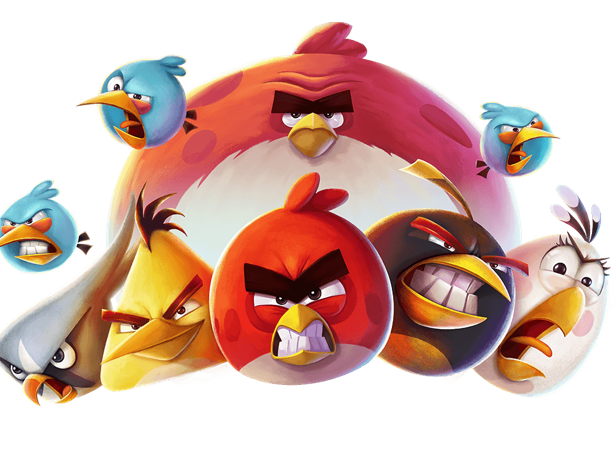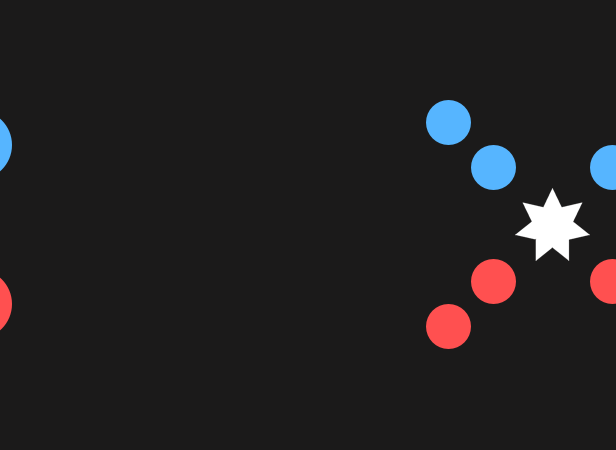Category
Data & Analytics
#Data & Analytics
Mobile Gaming Industry Analysis for 2017
Travel back in time and see what KPIs the top genres were hitting, in this 2017 industry overview.
#Data & Analytics
How to Plan and Track Events in Mobile Games
At one stage in your career you’ve begun to care about data. You decide that you want to know what your players are doing, so you start tracking gameplay events. You track everything. With a flurry of code your app is sending tracking events for every card combination, move, spell effect and battle stat! Pat yourself on the back, you have created terabytes of garbage. “Data is not information, information is not knowledge, knowledge is not understanding, understanding is not wisdom.” Clifford Stoll, Physicist Data collected without reason is just data. To be able to make informed decisions you need context, and only by understanding your player’s intentions will you start to be informed. There are a lot of similarities between mobile games and therefore there are some very standard metrics you might look at. We’ve created a simple tracking plan that you...
#Data & Analytics
The Best Kept Analytics Secrets Of The Most Popular Games: Great Artists Steal
There’s an infamous quote that’s been ascribed to a variety of artists and creative minds over the years, including Pablo Picasso, but Steve Jobs may have been the most famous to use it when, while discussing the Macintosh, he said that “great artists steal”. However, the phrase applies to much more than just the iconic machines; it can also be used when discussing painting, composing, writing, and – naturally – creating amazing games. That’s probably obvious when it comes to the creative side of developing a game, but being able to recognize greatness, and not necessarily stealing – but adapting it for your own purposes – is valuable when it comes to the analytics side. Learning From The Greatest It should hardly be surprising that the best games tend to have great analytics – and smart analytical minds behind them...
#Data & Analytics
Are Casual Games Maturing? Lessons from Angry Birds 2
This article was co-Authored with Michael Katkoff and originally published by Om Tandon here. Casual Games Casual games is a relatively new genre that was arguably kicked off by PopCap when Bejeweled launched on browsers in 2001. The true growth of the genre was enabled by Facebook and driven by Zynga’s FarmVille and other Ville-style games. The third and largely ongoing growth started in 2012, when King took its popular Facebook game Candy Crush Saga to mobile. Today, when we talk about casual games, we tend to mean games with relatively simple gameplay, substantial active user base and somewhat limited monetization potential compared to more advanced games. In short, casual games are generally targeted at people who may not traditionally consider themselves as gamers. Casual games like Angry Birds, Candy Crush Saga, and Temple Run are typically distinguished by simple rules, reduced demand...
#Data & Analytics
How To Determine Your Game’s Player LTV
It’s pretty easy to figure out how much a given player has spent on your game during the course of a set period of time. However, it’s much more complicated to figure out that player’s actual value to your community (and your bottom line). After all, you had to spend a certain amount to get that player to your game to begin with – marketing and promotions aren’t free! That’s where calculating player lifetime value or LTV comes in. The most basic definition of LTV is that player lifetime value equals the amount of revenue earned from an individual player throughout their lifetime – or the profit they will generate for you from their first moment playing your game until the last. We’ve talked about calculating player lifetime value before, and the standard simple equation holds true – the return...
#Data & Analytics
Understanding Your Audience – Bartle Player Taxonomy
Type of players We all know that every player is unique and special, with their own motivations for playing any given game and developing a personalized approach to its ecosystem. However, it’s nearly impossible to assess and cater to each type of personality with every aspect of your game, so it’s necessary to step back, organize, and plan things out a bit. And that starts by understanding what you’re dealing with in regard to your site’s community. Bartler’s Hence the need for a taxonomy and some kind of assessment system. The Bartle Player Taxonomy or Bartle Player Types are based on character theory and player behavior; the classification is meant to establish player personality types based on behavioral patterns and their goals and motivations for playing the game. Note that no player fits into one particular category; rather, most players...
#Data & Analytics
Maximizing The Value Of Player Data
There’s one key ingredient that’s the most valuable part of any game for developers, and it might not be the most obvious element or the first thing that you think of. It’s not the source code, database, live ops strategy, or anything other than the players themselves. Or more accurately, the data they generate. What’s more, maximizing the value of that data might be the most valuable thing that you can do as a marketer or game developer. And there are plenty of ways to accomplish that, starting with understanding and organizing the data itself. In fact, there are five groups of activities or sets of actions that you’ll take during your data collection or journey through the realm of gaming telemetry: Understanding Telemetry As It Applies To Your Game Knowing Your Objects And Attributes Defining And Name Your Features...
#Data & Analytics
Analytics In Swivel 2D (GameAnalytics Demo Game)
Introduction Like any other software development team, the GameAnalytics SDK team invests time in team-building and in other activities that elevate the team spirit. We participated in a local game jam in late spring where we managed to imagine and implement a simple immersive game mechanic. With a little more work after the event, we managed to build a simple game, which we later named Swivel 2D. The intention of building this small game is to illustrate how the GameAnalytics product can be used, from instrumentation through to the planning phase and finally on to programmatic implementation. Download the game! In order to fully understand the contents of this page, I’d recommend that you download and play the game. Here are the links: Download Swivel for iOS Download Swivel for Android Swivel is a pseudo-single player casual game for mobile platforms created by...
#Data & Analytics
A Map Of Worldwide Mobile Gaming Markets In 2017
The mobile games market is growing at a fast speed (52% during 2016 according to Newzoo), making it a truly a global area of business. However, as is in any other global business, there are differences in consumer needs, desires and behaviors. It is crucial for any mobile games company to learn about these differences as this information is the key to unlocking success – and profits – worldwide. In the mobile games marketplace, these differences are reflected on the types of games that become successful in different markets. It’s clear that these three markets are different, but how about the dozens of the other markets? This was the question we wanted to answer – and to back it up with facts. To make the results easy to understand, we wanted visualize the answers, and to create the “true world...
#Ads & Monetization
5 Effective Behavioural Economic Monetization Patterns
Behavioural Economics is a fascinating offshoot of economics, which explores psychology of decision making process of customers. Over the years I have been testing and reviewing numerous mobile games and apps in different genres. While I enjoy deconstructing and analysing different aspects of the digital products, on-boarding, core loop, social, meta, PvP etc. Monetisation patterns employed are of special interest to me due to my background in economics. [bctt tweet=”5 incredibly effective monetization strategies in game design (and the behavioural economics behind them)” username=”GameAnalytics”] Here are five unconventional monetisation patterns that differ from the crowd but work incredibly well, each based on a sound behavioural economics principle. But before we dive into what these patterns are, let’s understand the underlying Behavioural Economics Principles and how they apply to these unconventional patterns. What is ‘Behavioural Economics’? The study of psychology relating...
#Data & Analytics
Mastering The Art And Science Of A Mobile Game Soft Launch
The initial launch date – or soft launch date – of a new game is always one of the most exciting times for any game developer. However, like anything else worthwhile, there are some important steps that you need to take in order to make sure you get it right. It’s when you get to show the project that you’ve been working so hard on to the world! And then gain important insights with relatively low risk into its future success and any changes that need to be made for this and any future games you work on. Defining The Soft Launch Essentially, a soft launch is releasing the initial version of the game that’s ready for the public in a limited geographic area and with a fairly tight marketing budget. It’s meant to assess the potential audience, work out...
#Data & Analytics
How To Perfect Your Game’s Core Loop
At the heart of your game’s design, there are core mechanics, and the core gameplay loop. In short, it’s the main activities that structure the entire design and the players engage into repeatedly, in a looping sequence. It’s part of the essence of the game, something you cannot remove without fundamentally altering the experience. In the original Mario, this would be walking, running and jumping. The various enemies, bosses, and environments stem from the core mechanics. They are here to surprise the player, challenge his skills and keep the experience fresh. In other words: to exploit the core loop to its fullest, and add extra depth to the experience. There are several loops that structure your projects, depending on the lenses you use. Just like there’s a core gameplay loop, there are core economic loops that will derive from your...
#Data & Analytics
How to Tell a Story with your Analytics Reports
Analytics reports or presentations are generally not the most exciting thing ever – after all, they are usually just a bunch of numbers and maybe a few graphs on a page. However, it’s all a matter of perception – data can be really interesting when it’s presented in a compelling fashion. And dare we say even exciting! What’s more, analytics reports and presentations are some of the most vital documents that you can produce for your business, so you definitely shouldn’t treat them like an afterthought. You just need to learn to make it tell a story – but that’s easier said than done. In fact, for many companies or brands figuring out how to tell that story might be the most complicated part. On the surface, analytics reports aren’t especially captivating. With rows and columns of data most often...











